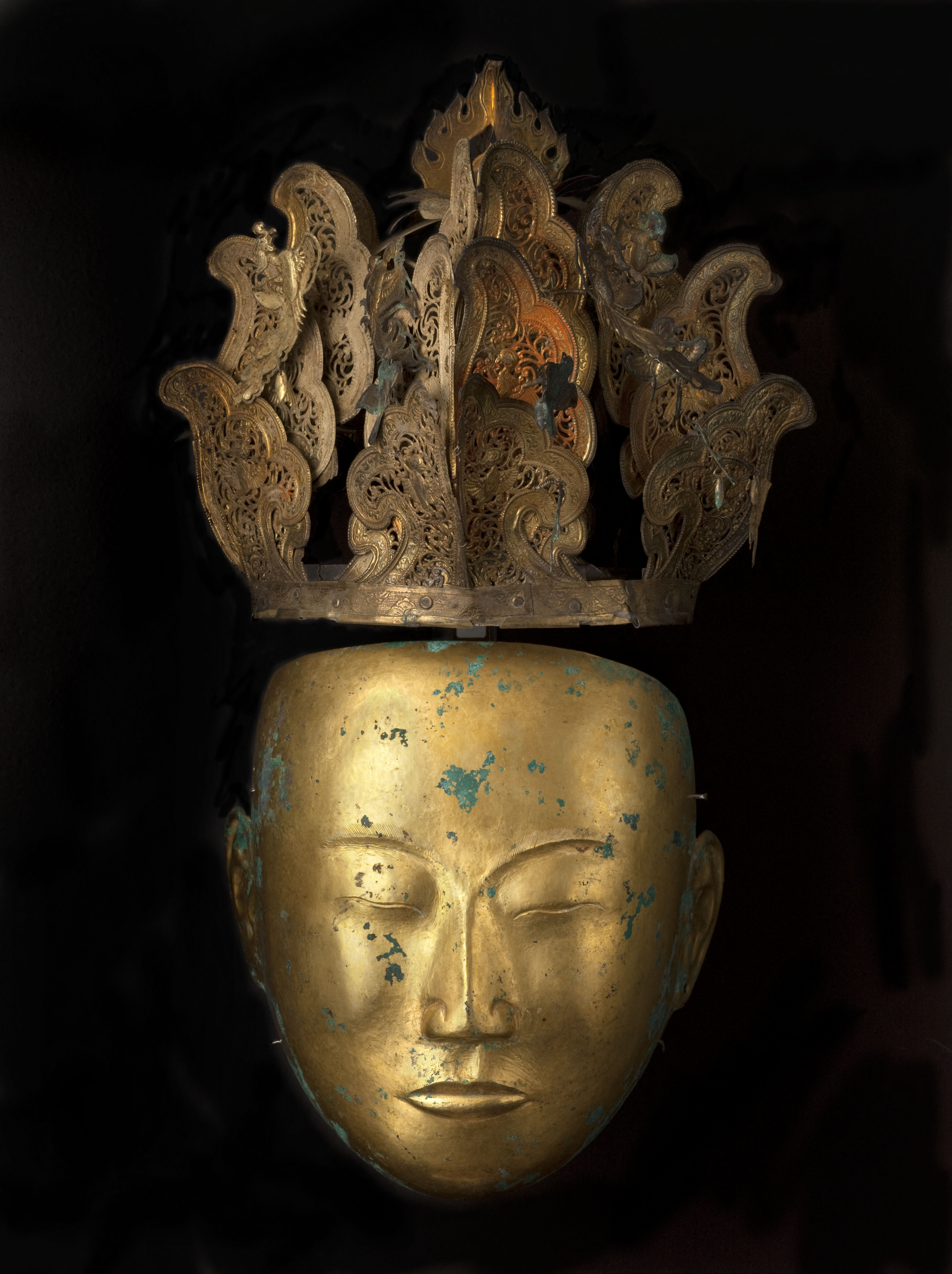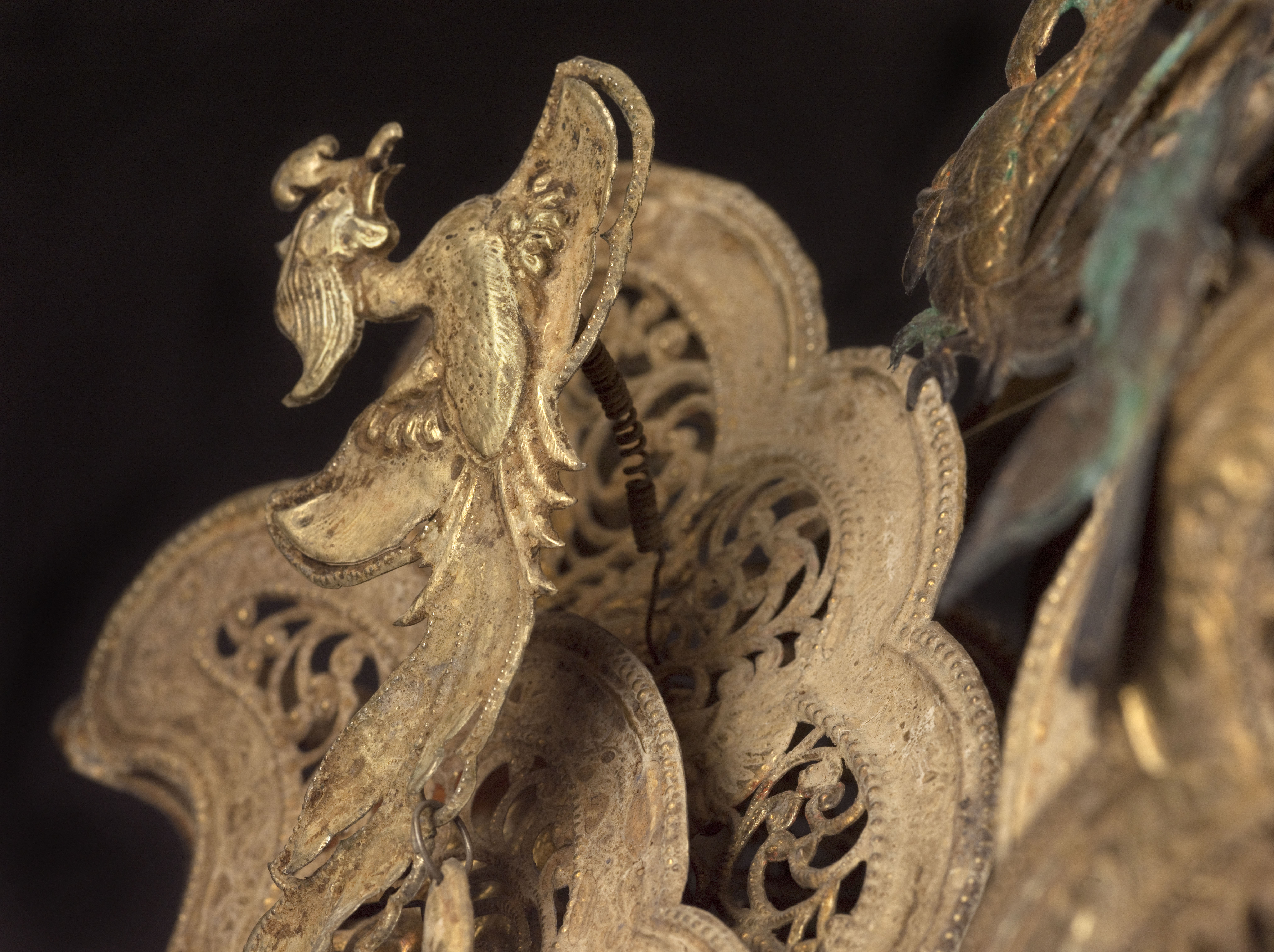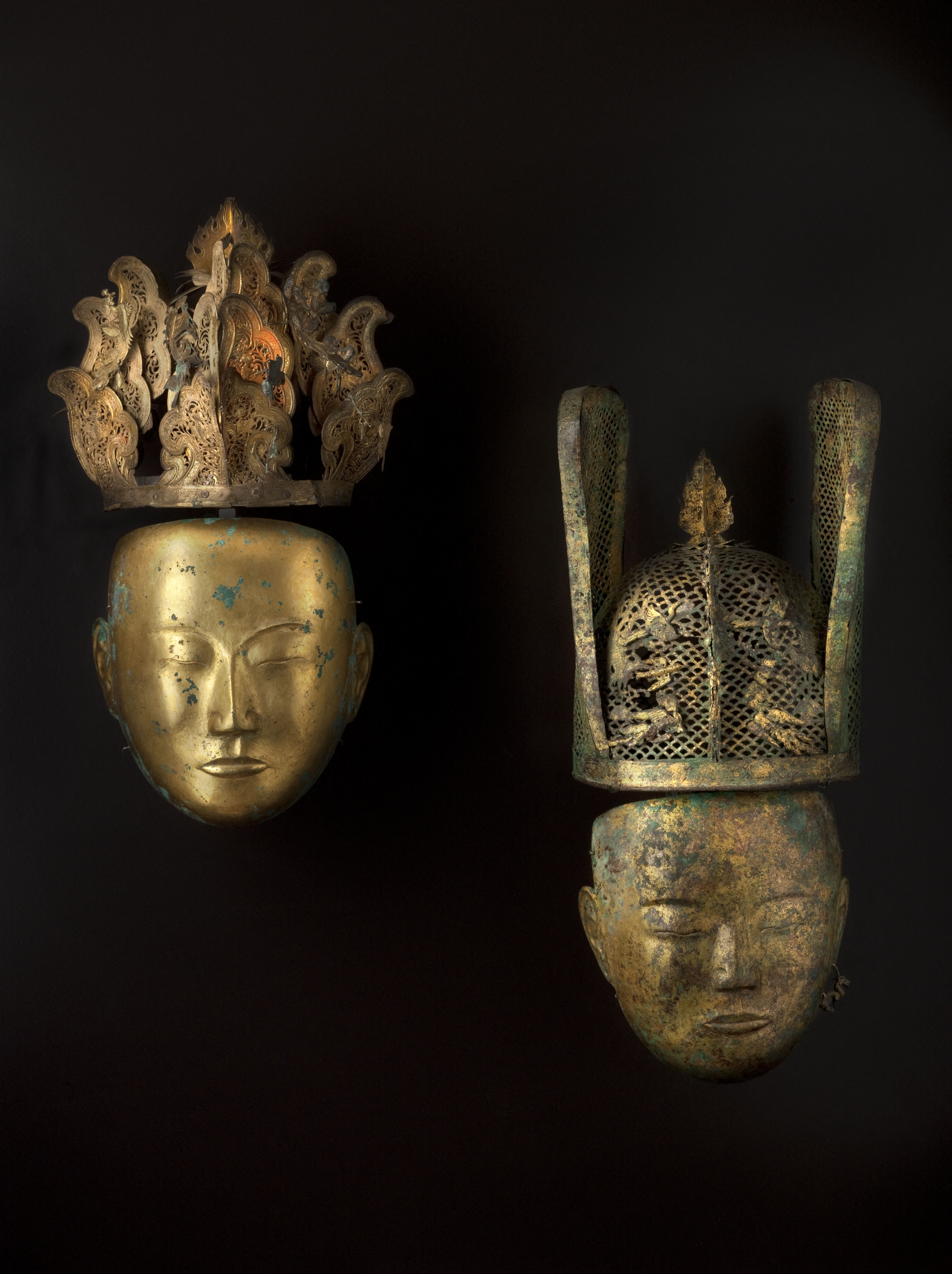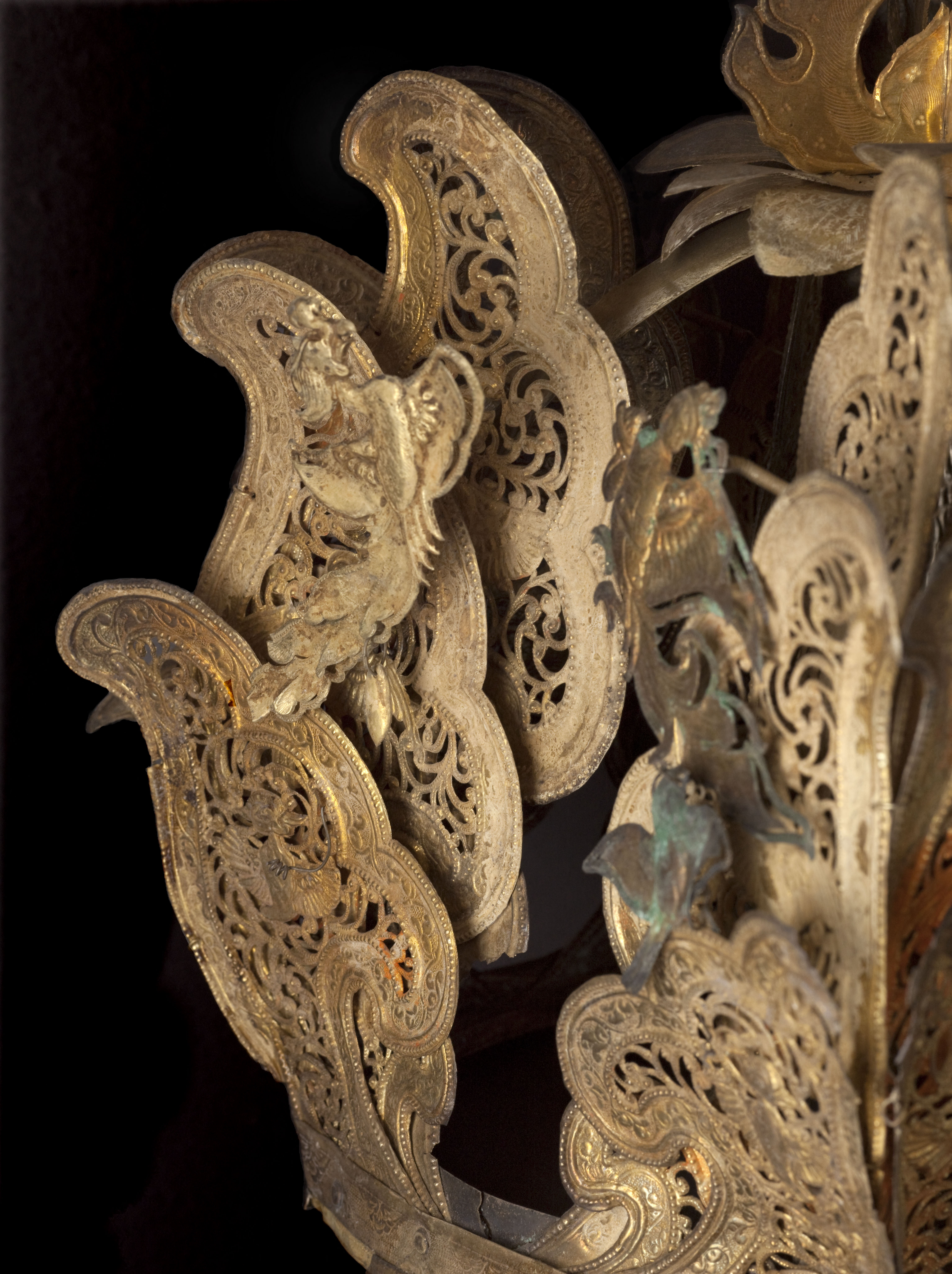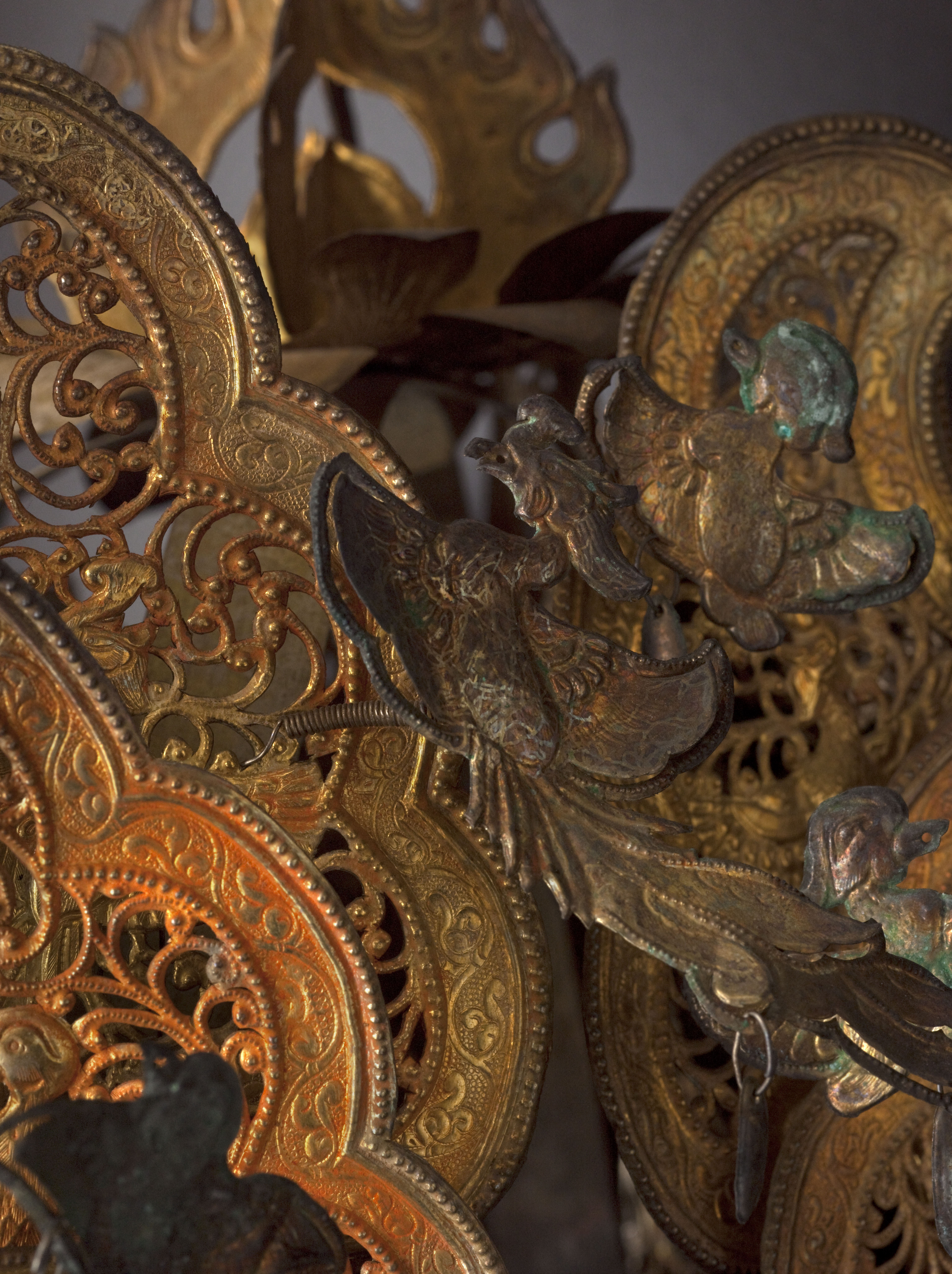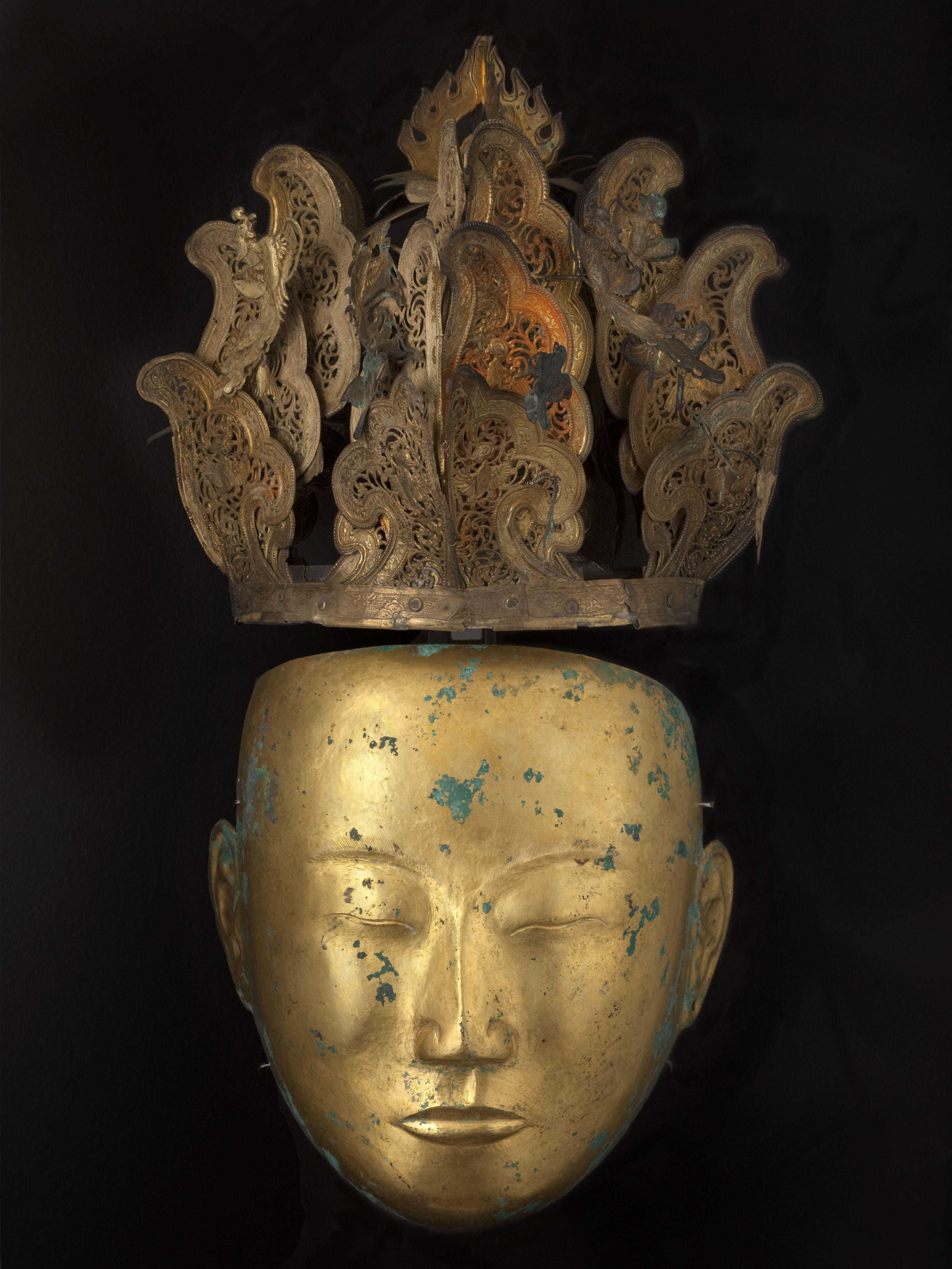
Masque funéraire
Bronze, Dorure
Bijou - Parure
Don manuel : Deydier, Christian; Deydier, Agnès
M.C. 2001-8
The composition of these two funerary adornments provide valuable information on the mode of burial in use among the Khitan elite under the Liao dynasty. The Khitan combined mummification with an elaborate funerary costume comprising elements in metal. The official dynastic History of the Liao makes only vague mention of these funerary accessories, referring to them simply as “objects covering the body”. Two tombs discovered in the 1980s have revealed bodies sufficiently well preserved to verify and complement the rare details mentioned in certain ancient texts.
Each of the Cernuschi Museum masks was made from a single sheet of hammered bronze, which was carefully polished before being gilded. Funeral masks are by far the most frequently found elements during excavations. They feature certain delicately incised details, such as a moustache, which would be the only item distinguishing male and female masks. The closed eyelids form an elegant curved line. Perforations at the edge of the mask enabled it to be attached to a net shroud made of metal thread. Funerary headdresses are found much more rarely; few of those made of fabric must have survived. Each of the Musée Cernuschi masks is combined with a gilded metal headdress made of threaded-together openwork plates.
The man’s headdress in silver-gilt has a complex structure: twenty-four openwork scallop-edged panels are arranged in groups of three on a framework of four stems. Each is adorned with a mandarin duck or a phoenix along with eight birds perched on the end of metal wires. These moving elements are reminiscent of the buyao hair ornaments from the three Yan periods (335-436) and the Korean kingdom of (Goguryeo) (37 BC-AD 668) discovered in north-eastern China. The iconography, however, is related to Chinese culture. Although they are not mentioned in the History of the Liao, headdresses such as these may have been part of the costume worn by public officials. Wide-ranging antecedents are found: the use of openwork sheets of metal is thought to date back to the Korean kingdom of Silla (57-935).
The stylistic characteristics of this rare funerary ensemble date it to the first quarter of the 12th century.
